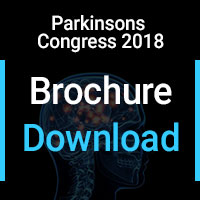
D’Auria Stanislao
Ospedale Santa Maria della Misericordia di Udine, Italy
Title: Steering stimulation and directional leads- a recent reliable concept to improve follow-up in implanted patients: A preliminary experience
Biography
Biography: D’Auria Stanislao
Abstract
In the last 20 years, thanks to technological development and still ongoing innovations in features and materials of implantable devices, deep brain stimulation (DBS) has become one of the most effective, reliable and safe surgical procedure for treatment of many different movement disorders. The clinical condition that has been better treated with such a technique is Parkinson’s disease. Nevertheless, many other diseases today are good indications for DBS like dystonia, essential tremor and Giles de la Tourette syndrome. Many papers say that DBS is like a “gold standard” in patients affected by dystonia or Parkinson's disease when pharmacological intake alone doesn't work or has lots of troublesome collateral effects. Since 2010, we started to use a stereotactical frameless technique. We noticed a real improvement in patients in terms of comfort, tolerability and reduced pain during surgery. At the same time, we obtained a very good precision in targeting, comparable to those of classical frame based surgery. Innovations, mostly in hardware such as leads, extentions and IPG, go on. We recently started to implant a new lead's generation named, “directional leads”. This lead has many different splitted contacts that allows the clinicians to steer the electrical field mostly wherever they want through the nervous tissue, obtaining clinical effect far from brain area, so as to avoid collateral effects. Since March 2016, we have performed 14 bilateral implantations for Parkinson’s disease and dystonia. At the time of reglage, when collateral effects like motor evoked unwanted responses or limbic effects have been elicited, switching the “hemi-contacts” allowed to make them disappear without any reduction in the desired beneficial effect. An issue we faced, was how to standardize all implanted patients, a shared rotational position of leads. As such, the clinicians can establish a number for any single contacts in order to compare results in different patients and in the single one over time as well. We also did not have an X-ray checking system in the Nexframe device, like basically any head-mounted and pin-fixed traditional stereotactical system has in itself. In other words, we needed a method that allowed to figure out the position of leads. We took two markers behind the ears to allineate during intraoperative X-ray checking. This brought to correct alignment of the lead's reference markers visible at the top of the whole group of contacts. In conclusion, even though the number of patients is low, we believe that directional leads bring to excellent results in terms of shaping of stimulation. They are a powerful tool in the hand of programmer clinicians, potentially able to improve the outcome of the patients. Splitting of contacts gives the chance to get a higher number of contacts allowing the clinician to choose among many stimulation's combination. Moreover, directional leads technology gives us the possibility to steer and deform the tridimensional electrical field shape. Warping and bending of electrical field, brings to a better results for patients, both lessening side effects and enhancing the positive benefits of stimulation. Our easy and reliable intraoperative tecnique is effective to correctly alineate in the same orientation the two leads of both sides.

